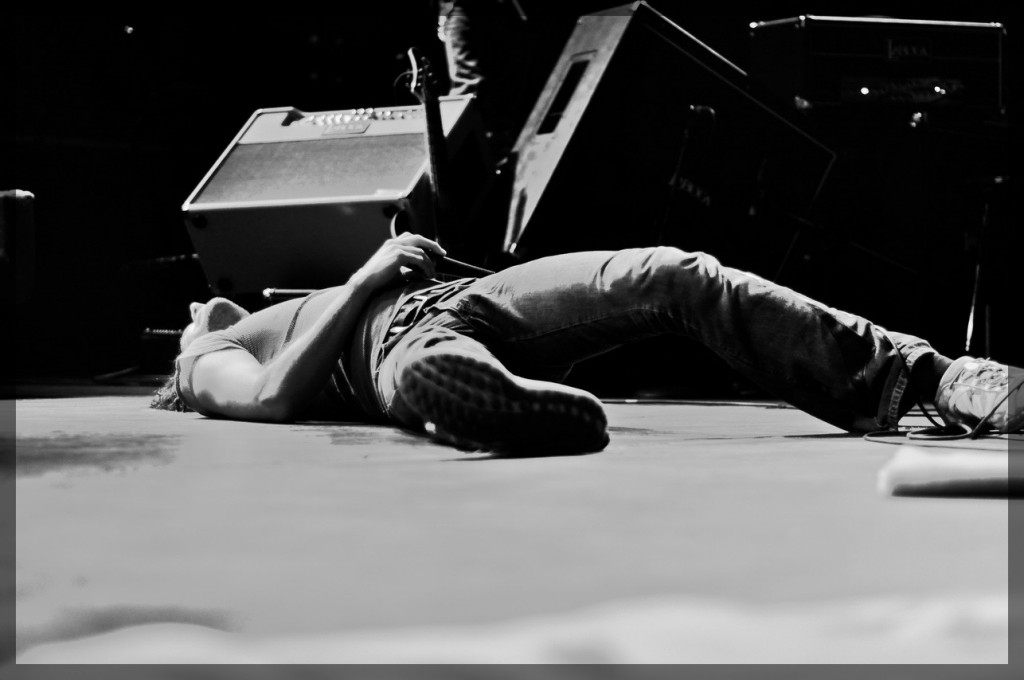Si vous vous demandiez quelle est la réalité des revenus générés par Spotify pour un groupe tel que Pain of Salvation, Daniel Gildenlöw nous a livré sur Facebook quelques éléments de réponses :
Daniel Gildenlöw earned an impressive 7.14 SEK (about 80 cents) on Spotify this half of the year! Wow! I am saving it up for a 1969 Ford Mustang and an LA-2A compressor…
Still anyone out there thinking Spotify saved musicians from being robbed?
80 centimes en un semestre… Autant dire que le groupe risque de devoir manger des nouilles encore longtemps, même si une heure plus tard il précisait également, et non sans humour une fois de plus :
Hey, I just saw that there were a few more Spotify sections in the statement, it actually amounts to something closer to 2 or even 3 euros man! Whooa, this will cut my waiting for that Mustang with, like, 200 years or so, right? 🙂
The thing is, Spotify is just a joke so far, a way of making people clean their conscience, as someone already said. They pay out close to nothing and compare it to radio as an excuse, but with Spotify you choose what to listen to, as opposed to radio broadcasts. And you can save the file for offline, which means limitless numbers of listens. This means royalties should rather be compared to that of buying actual discs.
Funny thing. I get 2€ worldwide for all albums on Spotify. All albums, since 1997. In that same statement I get €2,000 for having one lousy song on a few charts in one small lousy country for six months. Make that calculation add up. And then go support public service. 🙂
Love to you all, fans, enemies, buyers, downloaders, humans. Love to you, we all need it.
Donc voilà, environ 3€ de revenus récoltés sur les 6 derniers mois de présences sur Spotify, et ce en cumulant les écoutes pour tous les albums du groupe depuis 1997 (10)… Même si dans le même temps, Pain of Salvation est capable de récolter 2000€ avec un seul morceau, force est de constater que ca reste extrêmement maigre pour un musicien professionnel. Comptez en plus que le groupe est composé de 5 membres, et il n’ont plus qu’à aller se pendre…
Alors je dois dire que j’ai souvent été agacé par la position de Daniel vis à vis du téléchargement etc. : après tout, si Inside The Pain a vu le jour, c’est suite à ma rencontre avec Pain of Salvation sur… Napster ! Mais on ne peux que constater amèrement qu’une alternative telle que Spotify ne rapporte malheureusement rien au groupe. Sans doute rien de neuf là dedans, mais pour peu que le streaming représente pour beaucoup l’avenir de l’industrie musicale, ce type de témoignage devrait susciter encore de nombreuses interrogations…
Reste à savoir sinon combien d’écoutes tout cela représente concrètement, mais Daniel a malheureusement omis de le préciser… (edit : apparemment, il faudrait quelques 4 millions d’écoutes pour que l’artiste puisse espérer dégager un peu plus de 1000$ de revenus, on peut donc déterminer que PoS a obtenu un peu plus de 10 000 écoutes – Merci à Brethil pour le lien)
Le mot de la fin : pour Pain of Salvation, Spotify est annuellement juste 5€ mieux que le piratage.
Just on a final note, I hope you understand I didn’t intend to blame you guys 🙂
It’s just that Spotify has been depicted as The Solution out there in media, and fans are tricked into believing they are actually helping when they use it (ok, it IS better than downloading, but only less than €5 per year better), and that’s what really bothers me. It’s like a nation never accepting immigrants, then expecting the Nobel peace prize (or at least a good round of applauds) when they up that to 1 per year. You cannot simply defend things by comparing them to worse alternatives.And yes, it’s an American car, so what? I will keep listening to Simon & Garfunkel too if you don’t mind. 🙂







![Pain of Salvation : Panther [REVIEW]](/content/images/size/w800/wordpress/2020/06/pain-of-salvation-panther-artwork.jpg)

![Pain of Salvation: The passing light of day [Review]](/content/images/size/w800/wordpress/2017/01/pain-of-salvation-in-the-passing-light-of-day-cover-album-2016.jpg)
